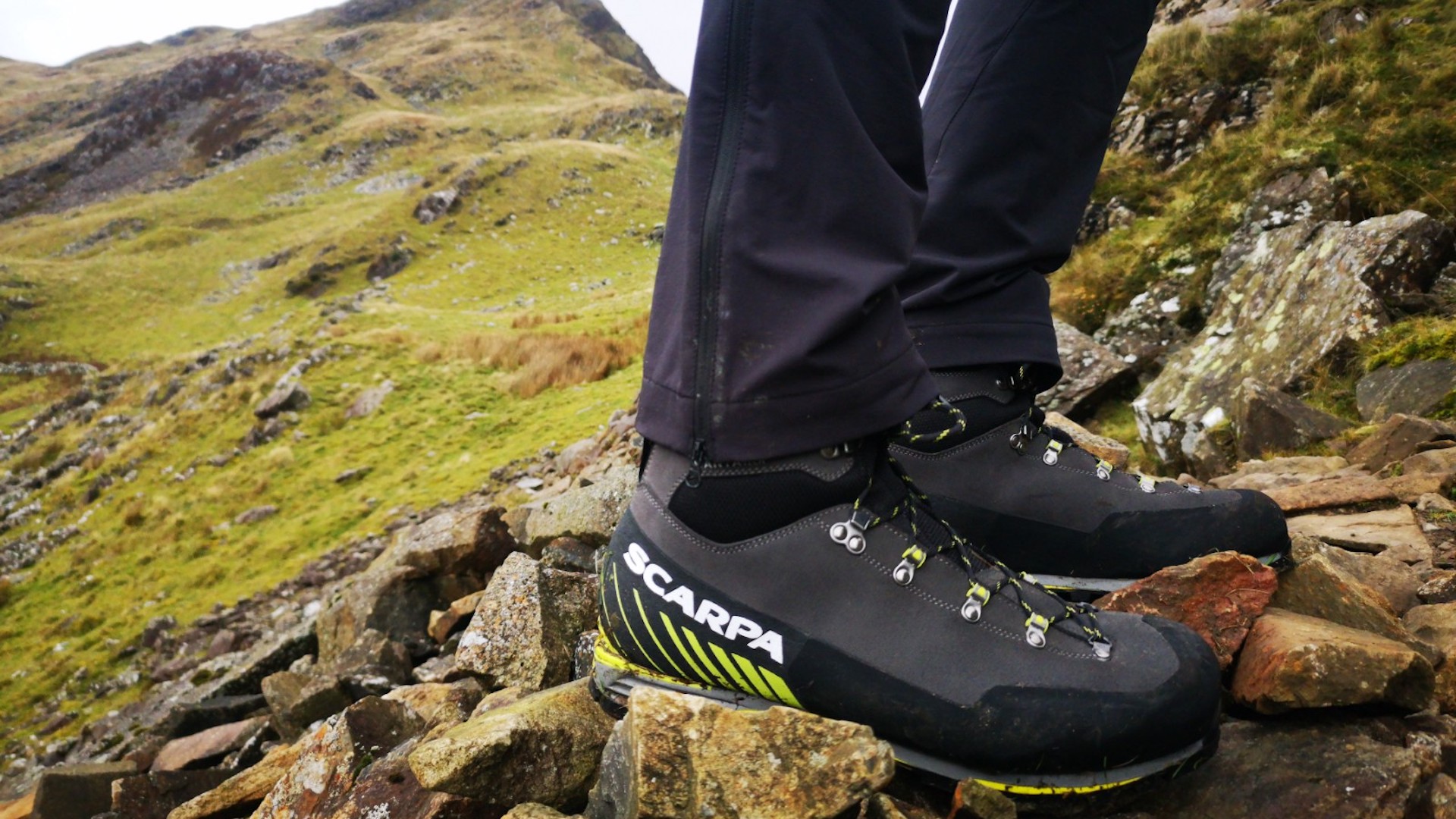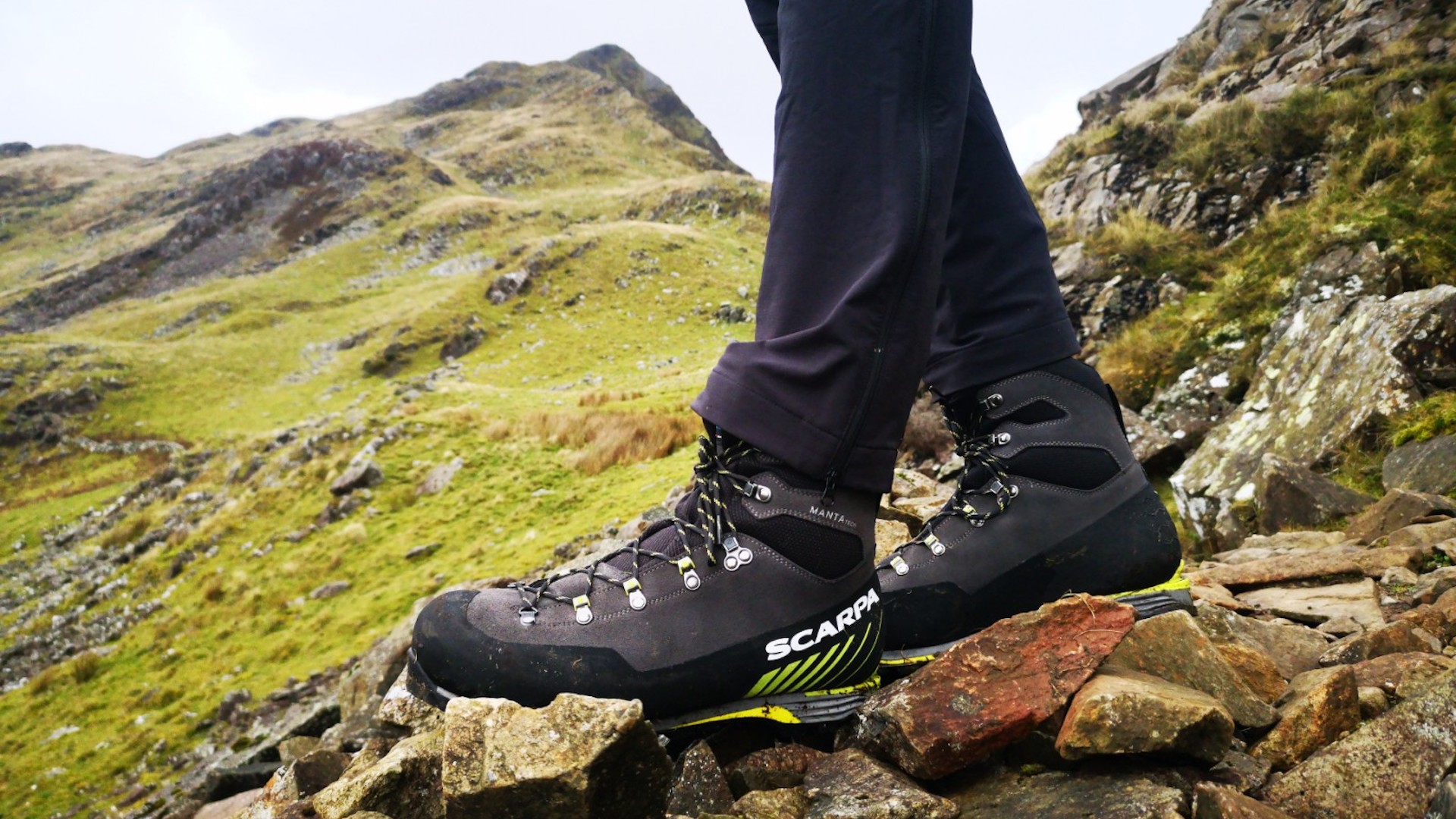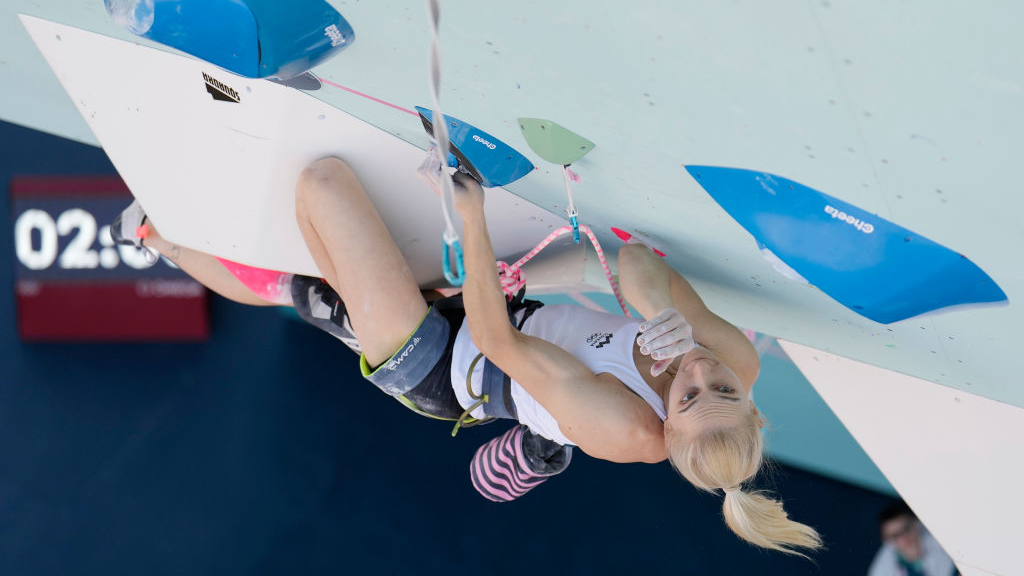Advnture Verdict
Widely regarded as the “benchmark” four-season mountaineering boot, the Scarpa Manta is a tried-and-tested classic. And we think the Manta Tech is a worthy successor to its predecessor, the Manta Pro, despite having a slightly lower price point.
Pros
- +
Comfortable
- +
Supportive
- +
Protective
- +
Warm
Cons
- -
Fairly broad fit
- -
Too hot and heavy for use outside winter
- -
Expensive
You can trust Advnture
Scarpa Manta Tech GTX: first impressions
The Scarpa Manta Tech GTX comes from good stock. A perennial favorite among a host of outdoor professionals, from mountain rescue team members to winter skills course instructors, the Scarpa Manta series has been around for nigh on three decades. That’s a pretty long legacy. The latest version, called the Manta Tech, is the replacement for the old Manta Pro boot, many of which are still going strong despite being used and abused over multiple winter seasons.
The Manta Tech is built on the same last as the previous Manta Pro but has a cleaner, more streamlined look thanks to redesigned uppers. As well as giving the boot a more modern and stylish appearance, this should also be a plus for durability, since there are now fewer panels and reduced stitching. The wraparound rubber rand has also been replaced with a partial TPU rand, which cuts weight. It’s still no lightweight, but then this is a boot built for cold and challenging mountain use. As such, an insulated Gore-Tex liner adds extra warmth. But how did it perform on test for our best winter hiking boots buying guide? Read on…
• RRP: £300 (UK) / €355 (EU)
• Sizes available: (EU) 38-47, (UK) 5-12
• Materials: 3mm Perwanger Suede and wraparound rubber-PU rand, Gore-Tex Insulated Comfort membrane lining, Vibram Pentax Precision XT outsole
• Weight (per boot): 880g / 1lb 15oz
• Colors: Shark / Lime
• Compatibility: Four season, B2
Scarpa Manta Tech GTX: on the trails

For winter hillwalking and mountaineering in the UK, the Scarpa Manta Tech GTX proved itself to be a brilliant performer. It’s robust, warm, sturdy and technically adept when fitted with a 10- or 12-point crampon, while being comfortable enough for snowy approaches and longer walk-ins. On more technical terrain, it’s stiff enough to front-point in, and rugged enough to take plenty of punishment on mixed rock and ice.
Drawbacks? It’s one of the heavier modern B2 boots around on the market today, though still weighs in at far less than older, more traditional B2s. As such, the Manta Tech can sometimes still feel a little clumpy, even compared to other B2 boots (particularly the streamlined AKU Tengu or La Sportiva Trango Tower), but the trade-off is superior support and protection, as well as additional warmth and durability.
Comfort
Despite the stiffness of the midsole and the sturdy cuff, there is a good amount of ankle flex and a little cushioning underfoot to ward off soreness. Of course, they’re a little too heavy, bulky and sweaty for general hillwalking, but then they’re overkill for anything below the snowline. Overall, they still proved to be one of the most wearable B2 boots we tested, providing great all-day comfort.
Fit
In terms of overall fit, this is a medium to high volume boot, which gives ample room for your chunkiest winter socks and lots of wiggle room to keep toes moving in cold conditions. They are fairly wide compared to other boots we tested. Still, we found them to be very comfortable, with no discernible rubbing or hotspots. They’re available in men’s EU 40 to 50 (including half sizes up to 46.5), a generous range indeed. There’s also a dedicated women’s version. (See also: How should hiking boots fit?)
Performance
The Scarpa Manta Tech GTX has solid technical performance for winter hillwalking, scrambling and easier-grade mountaineering. If and when you encounter ice and hard-packed snow, the boot is flat-lasted and equipped with a heel welt for an optimal fit with C2 crampons. It really does come into its own with a semi-auto crampon fitted, with no slippage and a very sturdy, secure feel underfoot. The only thing to perhaps note is that it has a fairly chunky heel that may not suit particularly slim or narrow crampons. Having said that, we tried it with semi-automatic Grivel G12 New-matics and Black Diamond Seracs, and it fits both well.
The outsole is the reliable and durable Vibram Mulaz S unit, made from a particularly durable compound optimized for cold weather use. The lug pattern features a front climbing zone for precise edging. Multidirectional lugs and deep channels help to ensure solid traction on mixed terrain and gives you a sole that doesn’t clog too frequently with mud or snow.

Protection
This is a boot for tackling tough terrain in cold conditions, and for that sort of stuff we think this boot is just about the best on the market. There’s plenty of ankle and tongue padding, plus a fully gusseted construction and an insulated, waterproof Gore-Tex liner to ensure feet stay dry no matter how wet, icy or snowy the conditions.
Durability
The Manta Pro was famed as being one of the toughest B2 boots out there, and the sheer number of them still around attests to that fact. The Tech also seems built to take serious abuse, with its high wraparound rand and thick leather uppers. Since this is a new boot, we haven’t had our test pair long enough to confirm their durability, but we’d expect them to last extremely well. They’re also resoleable, which is a fact worth noting. Resoling a boot typically costs anywhere between £50 to £90 – not cheap, but a fraction of the cost of having to shell out for a brand new pair.
An outdoors writer and editor, Matt Jones has been testing kit in the field for nearly a decade. Having worked for both the Ramblers and the Scouts, he knows one or two things about walking and camping, and loves all things adventure, particularly long-distance backpacking, wild camping and climbing mountains – especially in Wales. He’s based in Snowdonia and last year thru-hiked the Cambrian Way, which runs for 298 miles from Cardiff to Conwy, with a total ascent of 73,700 feet – that’s nearly 2½ times the height of Everest. Follow Matt on Instagram and Twitter.


